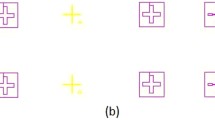Abstract
In the paper, application of the digital holographic method for full field characterization of the beam generated by microlenses is considered. For this goal, the laboratory setup was designed based on Mach-Zehnder interferometry with the additional reference channel. The beam generated by a microlens was imaged by an afocal system and intensity distributions or interferograms (holograms) were registered by CCD camera. The digital holography using one image allows us to determine microlens parameters, i.e., focal length, aberrations, and shape. The optimum conditions to determine the surface shape of a microlens using holographic method have been found. We compare obtained results with geometrical and interferometric measurements. We show the advantage of digital holography for a shape microlens determination (improved accuracy), aberrations, and focal length (characterization facility). Through optimum refocusing, the digital holography gives more precise shape. The paper is accompanied with computer simulations and the experimental measurement data for geometrical, interferometric, and holographic methods.
Similar content being viewed by others
References
C.A. Edwards, H.M. Prestby, and C. Dragone, “Ideal microlens for laser to fiber coupling”, J. Lightwave Technol. 11, 252–257 (1993).
H.J. Tiziani, R. Achi, R.N. Krämer, T. Hessler, M.T. Gale, M. Rossi, and R.E. Kunz, “Microlens arrays for confocal microscopy”, Opt. Laser Technol. 29, 85–91 (1997).
H.P. Herzig, Micro-Optics, Elements, Systems and Applications, Taylor and Francis, London, 1997.
T. Miyashita, “Standardization for microlenses and microlens arrays”, Jpn. J. Appl. Phys. 46, 5391–5396 (2007).
B.K. Lee, D.S. Kim, and T.H. Kwon, “Replication of microlens arrays by injection molding”, Microsyst. Technol. 10, 531–535 (2004).
H. Ottevaere and H. Thienpont, “Refractive optical microlenses: an introduction to nomenclature and characterization techniques”, in Encyclopedia of Modern Optics, Vol. 4, pp. 21–43, edited by R.D. Guenther, D.G. Steel, and L. Bayvel, Elsevier, Oxford, 2004.
F. Charriëre, J. Kuhn, T. Colomb, F. Montfort, E. Cuche, Y. Emery, and K. Weible, “Characterization of microlenses by digital holographic microscopy”, Appl. Optics 45, 829–835 (2006).
T. Kozacki, M. Kujawińska, and P. Kniazewski “Investigating the limitation of optical scalar field tomography”, Opto-Electron. Rev. 15, 102–109 (2007).
A. Rohrbach and W. Singer, “Scattering of a scalar field at dielectric surfaces by Born series expansion”, J. Opt. Soc. Am. A 15, 2651–2659 (1998).
T. Kozacki, “Numerical errors of diffraction computing using Plane Wave Spectrum Decomposition”, Opt. Commun. 281, 4219–4223 (2008).
Author information
Authors and Affiliations
Corresponding author
About this article
Cite this article
Kozacki, T., Józwik, M. & Jóźwicki, R. Determination of optical field generated by a microlens using digital holographic method. Opto-Electron. Rev. 17, 211–216 (2009). https://doi.org/10.2478/s11772-009-0005-z
Published:
Issue Date:
DOI: https://doi.org/10.2478/s11772-009-0005-z




